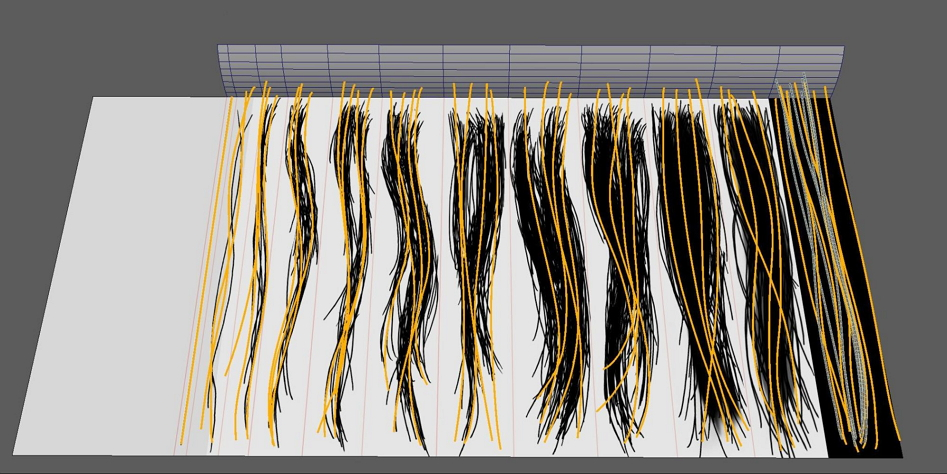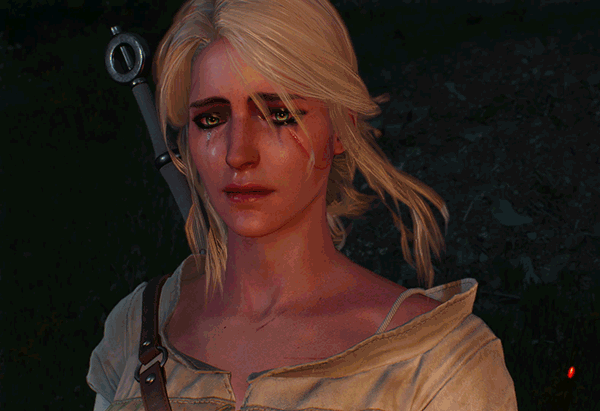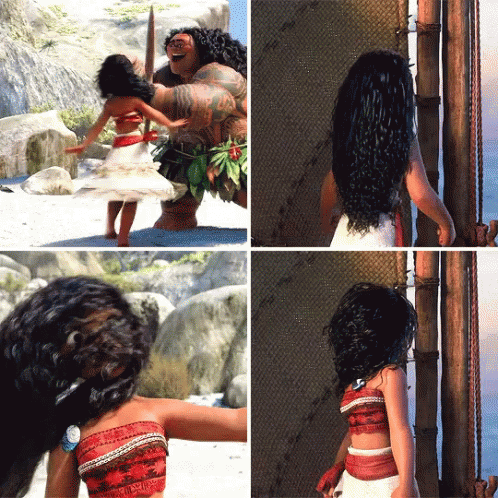Disney introduced its own hair animation system HairControl
One of the most difficult problems of modern 3D-animation is still in such a seemingly simple thing as drawing hair. In fact, the creation of hairstyles - is one of the most complex and time-consuming operations that you can imagine. Animation and gaming studios have long ago learned how to use real actors to relieve their movements and make the actions of the characters realistic. The same applies to the animal world when it comes to "animal" animated films, even if the characters are made anthropomorphic (as, for example, in Zveropolis). But if the animation of wool or short “half box” haircuts is still somehow given to artists, then with long female hairstyles everything is extremely and extremely ambiguous. For this reason, many studios and projects have to abandon realism in their work and use simpler,

Photo: Disney Research Disney
Company (given its imperial ambitions in the market) did not want to put up with this approach, so a few days ago the public was presented with a method of tracking and controlling the behavior of the hair of animated characters. In this development is applicable as well as for the market of animated films, and for the gamedev market. The main difference of the new system from the established practices: the rejection of the creation of a grid of “curls” and the transition to a dynamic system with “anchors”. In their release, Disney experts talk about the new hair generation system, which is based on the principle of interaction with the center of mass and reference points inside the curls.
A feature of this system is that it does not require a huge increase in computing power and, in general, is already applicable in the production of animated films and video games.
Disney experts admit that in order to develop a new system, they needed to take a “step back” to rethink the existing animation practices. So, at the forefront of the new system was tracking the position of hair relative to the phantom center of mass of the curl, as well as their interaction with a number of reference points. With a sufficient level of detail, this scheme allows you to set the center of mass and the system of reference points for each hair separately, which makes the hairstyle behavior as realistic as possible. In this case, the render will be carried out according to the algorithm instead of manual animation of each section manually. With full project documentation you canread here .
In January 2018, at 80.lv, material was published that explains quite reasonably how the animation of the hair of computer games characters is done (which is also applicable to animated films). For this, the system of “guides” is actively used, around which individual curls are lined up, ultimately forming the character's entire hairstyle:

After the mesh has been formed, locks are placed on the character’s head model from thick to rare to form a full-fledged hairstyle. In general, this system allows you to build a realistic enough model that looks very, very worthy, especially if you remember what hair was in games 10 years ago:

The problem is that it looks good and nice exactly until the moment it starts moving. The human brain very much “thinks out” for us, however, the fact that not everyone moves their hair independently, but whole strands always strikes the eye:

Cyri hair animation, 2013
Ciri was chosen as the most obvious example of using a curl system with static frame for hair drawing. If you look at Triss or Jennifer hairstyles, then it becomes not so noticeable and it just creates the feeling that wizards wear wigs from a LEGO hairstyle.
Of course, much more attention is paid to the smoothness and realism of the animation of hair when creating films. An example is a picture of the same Disney company called Rapunzel. In this tale, everything revolves around the hair of the protagonist, but in the course of watching the viewer does not leave the feeling that the giant mane of another Disney princess is simply weightless, and sometimes lives according to its own laws of physics.
The situation would be even worse if the image were more realistic and less “cartoon-like” in terms of proportions and drawing. Then the amount of dissonance from what is happening with Rapunzel's hair on the screen would exceed all the pleasure of viewing even in young children, not to mention their parents.
We can say with confidence that early prototypes (or a full-fledged development for internal use) Disney also tested her film “Moana”. In addition to the standard for Disney songs and the salvation of the world, the audience remembered this tape also by the extremely realistic behavior of the main character's hair:

If you watch the new Disney princess, you will notice that her hair, unlike the studio’s earlier works, does not obey the animator’s fantasy, and the laws of physics in our usual form.
The only obstacle to the ubiquitous distribution of this system is that it is protected by copyright, and development information is presented as a “means of ensuring the timely dissemination of scientific and technical work on a non-commercial basis.”

Photo: Disney Research Disney
Company (given its imperial ambitions in the market) did not want to put up with this approach, so a few days ago the public was presented with a method of tracking and controlling the behavior of the hair of animated characters. In this development is applicable as well as for the market of animated films, and for the gamedev market. The main difference of the new system from the established practices: the rejection of the creation of a grid of “curls” and the transition to a dynamic system with “anchors”. In their release, Disney experts talk about the new hair generation system, which is based on the principle of interaction with the center of mass and reference points inside the curls.
A feature of this system is that it does not require a huge increase in computing power and, in general, is already applicable in the production of animated films and video games.
Disney experts admit that in order to develop a new system, they needed to take a “step back” to rethink the existing animation practices. So, at the forefront of the new system was tracking the position of hair relative to the phantom center of mass of the curl, as well as their interaction with a number of reference points. With a sufficient level of detail, this scheme allows you to set the center of mass and the system of reference points for each hair separately, which makes the hairstyle behavior as realistic as possible. In this case, the render will be carried out according to the algorithm instead of manual animation of each section manually. With full project documentation you canread here .
In January 2018, at 80.lv, material was published that explains quite reasonably how the animation of the hair of computer games characters is done (which is also applicable to animated films). For this, the system of “guides” is actively used, around which individual curls are lined up, ultimately forming the character's entire hairstyle:

After the mesh has been formed, locks are placed on the character’s head model from thick to rare to form a full-fledged hairstyle. In general, this system allows you to build a realistic enough model that looks very, very worthy, especially if you remember what hair was in games 10 years ago:

The problem is that it looks good and nice exactly until the moment it starts moving. The human brain very much “thinks out” for us, however, the fact that not everyone moves their hair independently, but whole strands always strikes the eye:

Cyri hair animation, 2013
Ciri was chosen as the most obvious example of using a curl system with static frame for hair drawing. If you look at Triss or Jennifer hairstyles, then it becomes not so noticeable and it just creates the feeling that wizards wear wigs from a LEGO hairstyle.
Of course, much more attention is paid to the smoothness and realism of the animation of hair when creating films. An example is a picture of the same Disney company called Rapunzel. In this tale, everything revolves around the hair of the protagonist, but in the course of watching the viewer does not leave the feeling that the giant mane of another Disney princess is simply weightless, and sometimes lives according to its own laws of physics.
The situation would be even worse if the image were more realistic and less “cartoon-like” in terms of proportions and drawing. Then the amount of dissonance from what is happening with Rapunzel's hair on the screen would exceed all the pleasure of viewing even in young children, not to mention their parents.
We can say with confidence that early prototypes (or a full-fledged development for internal use) Disney also tested her film “Moana”. In addition to the standard for Disney songs and the salvation of the world, the audience remembered this tape also by the extremely realistic behavior of the main character's hair:

If you watch the new Disney princess, you will notice that her hair, unlike the studio’s earlier works, does not obey the animator’s fantasy, and the laws of physics in our usual form.
The only obstacle to the ubiquitous distribution of this system is that it is protected by copyright, and development information is presented as a “means of ensuring the timely dissemination of scientific and technical work on a non-commercial basis.”
